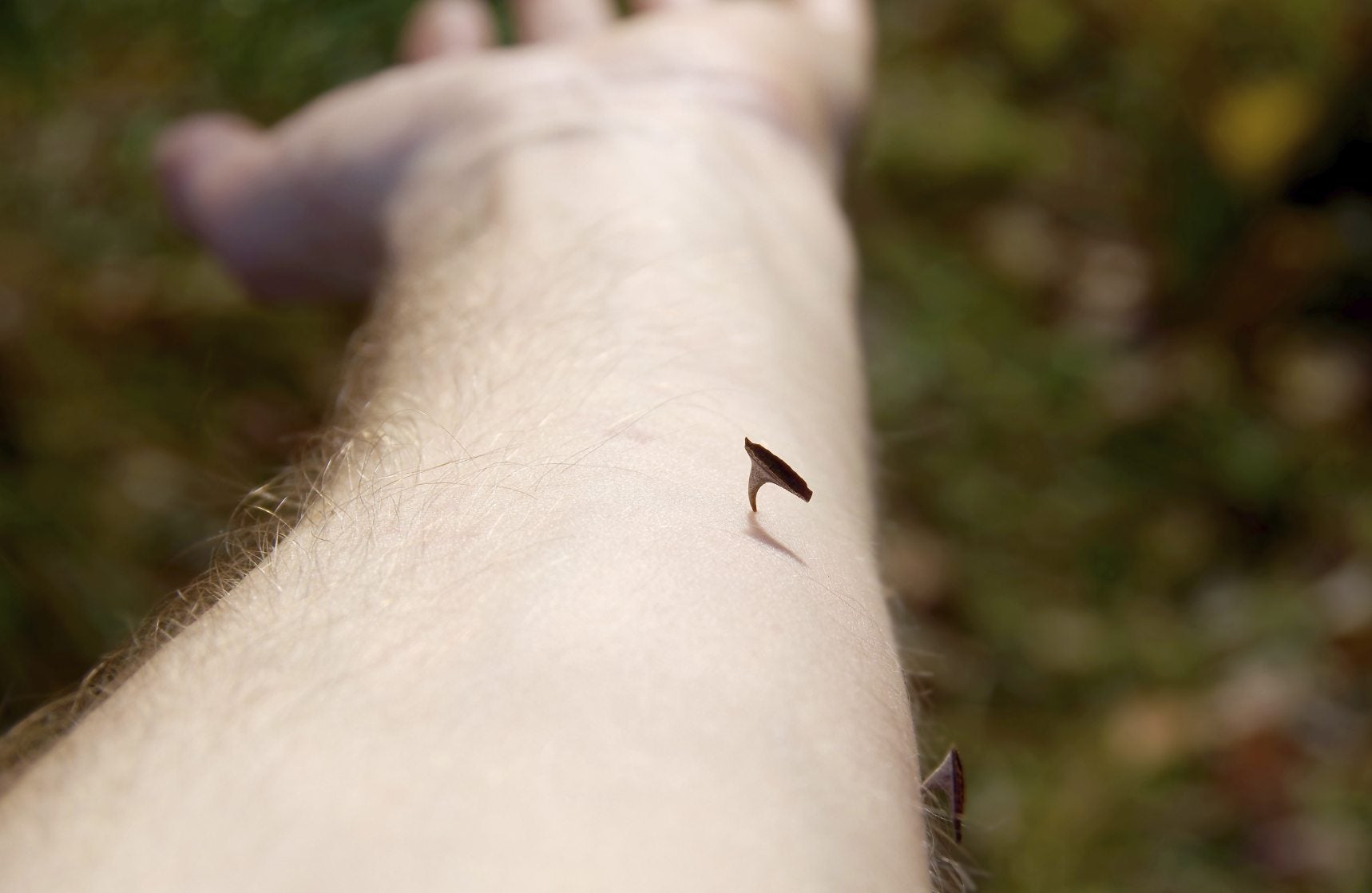What Is Rose Picker’s Disease: Tips On Preventing A Rose Thorn Infection


The Consumer Product Safety Commission (CPSC) reports that emergency rooms treat more than 400,000 garden related accidents each year. Taking proper care of our hands and arms while working in the garden is extremely important in preventing some of these accidents. The thorn on a rose stem provides an excellent device for transmitting infectious material into your skin, as is seen with rose picker’s disease, a fungus from rose thorns. Read on to learn more.
What is Rose Picker’s Disease?
I had never heard of rose picker’s disease or the Sporothrix schenckii fungus until about eight years ago now. Had someone told me about this before, then I would have thought they were joking due to my being a Rosarian. However, the disease and the fungus became very real to me when my dear mother fell into a climbing rose bush in her backyard. She got several puncture wounds from that fall and a few nasty cuts. Some thorns had also broken off in her skin. We cleaned her up, removing the thorns and using hydrogen peroxide on the wounds. We thought we had done a thorough enough job, learning later we had not! My mother started to develop these hard bumps under the skin that were itchy and painful, eventually breaking open to drain. I will spare you the rest of the nasty details. We took her to the doctor and then to a specialist that was also a surgeon. The entire ordeal went on for nearly two years with antibiotic drugs and surgeries to remove the nodules. Had we taken her to the doctor as soon as possible, be it against her will, perhaps we could have saved her the grueling experience. The first doctors were perplexed by what they saw, and the specialist surgeon told me that he was going to write a medical paper on the entire situation. That is when it really hit me that what we were dealing with was extremely serious – these were symptoms of rose picker’s disease.
Preventing a Rose Thorn Infection
Sporotrichosis is a chronic infection characterized by nodular lesions of the subcutaneous tissue and the adjacent lymphatics that make pus, digest the tissue, and then drain. Some of the diseases that may be caused by Sporothrix are:
- Lymphocutaneous infection – localized lymphocutaneou sporotrichosis
- Osteoarticular sporotrichosis – the bones and joints may become infected
- Keratitis – the eye(s) and adjacent areas may become infected
- Systemic infection – sometimes the central nervous system is invaded as well
- Pulmanary sporotrichoisis – caused by the inhalation of the conidia (fungal spores). Seen in about 25% of the cases.
Sporothrix typically lives as an organism that obtains nutrients from dead organic matter such as wood, decaying vegetation (such as rose thorns), sphagnum moss, and animal feces in the soil. Sporothrix is especially abundant in areas where sphagnum moss is abundant, such as in central Wisconsin. So, is rose thorn disease contagious? It is only rarely transmitted to humans; however, when the sphagnum moss is collected and used for floral arrangements and such where it is handled a lot, the right conditions are provided for the transmission to some degree. Wearing those heavy, hot gloves while handling or pruning roses may feel like a huge inconvenience, but they do provide great protection. There are rose pruning gloves on the market these days that are not as heavy really with protective sleeves that extend up the arm for additional protection. Should you be poked, scratched, or pricked by rose thorns, and you will be if you grow roses for any length of time, take care of the wound properly and right away. If the wound draws blood, it is definitely deep enough to cause problems. Even if it doesn’t, you could still be at risk. Do not make the mistake of thinking that treatment of the wound can wait while you finish your pruning or other garden chores. I understand that it is an inconvenience to drop everything, go treat a “boo-boo,” and then go back to work. However, it truly is very important – If nothing else, do it for this old rose man. Perhaps it would be worth your while to create a little medical station of your own for the garden. Take a small plastic paint bucket and add some hydrogen peroxide, individually wrapped gauze pads, wound cleaning wipes, tweezers, Bactine, Band-Aids, eyewash drops, and whatever else you think appropriate in the bucket. Take your own little garden medical station with you each time you go out to work in the garden. That way treating a wound does not require travel to the house to take care of it. Keep an eye on the wound, even if you think you took care of things properly at the time. If it becomes reddish, swollen, or more painful get yourself in to see your doctor immediately! Enjoy gardening in a safe and thoughtful manner, after all our garden friends need our shadow there!
Gardening tips, videos, info and more delivered right to your inbox!
Sign up for the Gardening Know How newsletter today and receive a free copy of our e-book "How to Grow Delicious Tomatoes".

Stan V. Griep contributed to Gardening Know How for many years, and has been a Colorado Native Rosarian for over four decades. He is an American Rose Society Certified Consulting Master Rosarian in the Rocky Mountain District, and a member of the Denver Rose Society, the Loveland Rose Society, and the American Rose Society. He is Gardening Know How's in-house expert on all things roses.
-
 Try The Trend – Turn Any Bed Into A Keyhole Garden With This Clever In-Ground Composter
Try The Trend – Turn Any Bed Into A Keyhole Garden With This Clever In-Ground ComposterKeyhole gardening is an efficient and sustainable practice that saves space. Get started on this DIY project quickly and easily with an in-ground composter.
By Bonnie L. Grant
-
 4 Superfast Composting Methods: Turn Waste Into Garden Gold In 30 Days Or Less
4 Superfast Composting Methods: Turn Waste Into Garden Gold In 30 Days Or LessTry the fastest composting methods to turbocharge your pile and transform kitchen scraps and garden waste into finished compost in just a few weeks.
By Mary Ellen Ellis